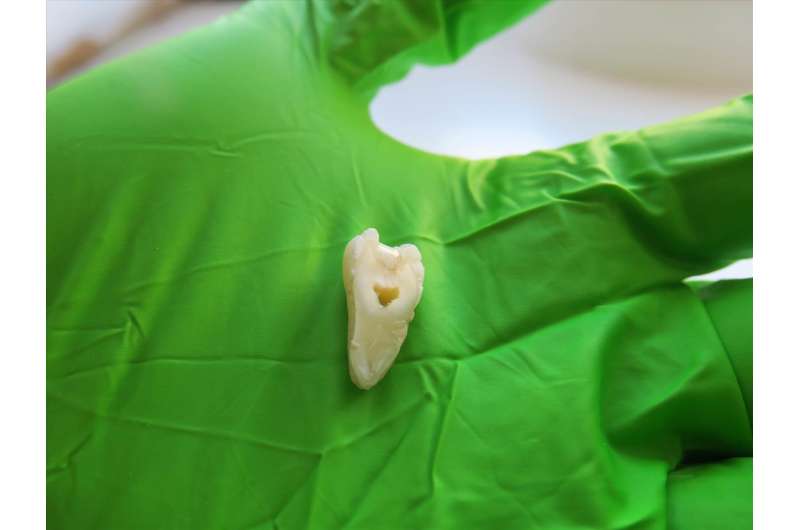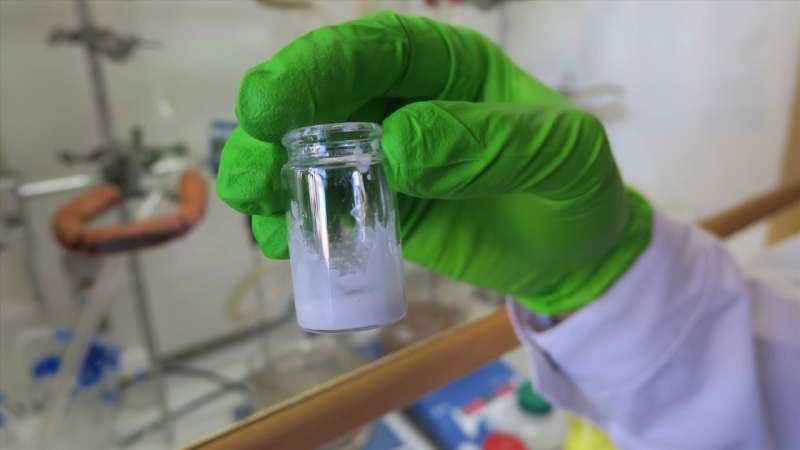Super-strong, bio-compatible material may make broken fillings a thing of the past

Soon you may no longer have to worry about how long your dental repairs will last. A new dental reconstruction material developed in Sweden offers unprecedented improvements over existing acrylate-based fillers. Adapted from bone fracture glue research at KTH Royal Institute of Technology, the material, which can be molded in a clinical setting, surpasses currently-used implant materials in key areas of stiffness, strength, biocompatibility and adhesion.
Michael Malkoch, professor in the Department of Fibre and Polymer Technology at KTH, says that the new material was found to bond 160 percent better to tooth surfaces than current commercially-available polymers, which means fewer patients would experience detachment of dental fillers. It also has the potential for 3D printing in a clinical setting.
The results were published in Advanced Materials.
"It provides higher strength, straightforward moldability and non-toxicity. We believe this foretells a new era in hard tissue repair," Malkoch says.
The researchers see the work as a guide for development of future materials for implants. "The reason why this works is that we have elevated the number of chemical crosslinks in the materials to such level that the properties we receive are extraordinary," he says.
The team used light-initiated thiol-yne coupling (TYC) chemistry to polymerize triazine-trione (TATO) monomers, in contrast to the standard thiol-ene coupling (TEC) systems currently used.
The advantage of the TYC reaction is that it generates higher crosslinking density, thus resulting in more rigid and mechanically stronger materials. "This is due to the nature of the carbon-carbon triple bond that covalently bond to two thiols via photochemical reactions," he says.

"An important feature is the biological profile of the composition and final materials have excellent biological profile. Personally, I would rather have these materials as dental filler than existing acrylate based one, known for their allergenic properties and questionable compositions," he says.
The study follows a recent article published in the journal Advanced Functional Materials, in which Malkoch's team and researchers from Karolinska Institutet developed a bone fracture adhesive that combines the rigidity and load-bearing properties of dental resin composites with the bonding strength of self-etching primer.
The research was financed by the Knut and Alice Wallenberg Foundation under the Wallenberg Academy Fellow Program.
More information: Mathieu Arseneault et al. The Dawn of Thiol-Yne Triazine Triones Thermosets as a New Material Platform Suited for Hard Tissue Repair, Advanced Materials (2018). DOI: 10.1002/adma.201804966
Viktor Granskog et al. High-Performance Thiol-Ene Composites Unveil a New Era of Adhesives Suited for Bone Repair, Advanced Functional Materials (2018). DOI: 10.1002/adfm.201800372
Journal information: Advanced Materials , Advanced Functional Materials
Provided by KTH Royal Institute of Technology

















